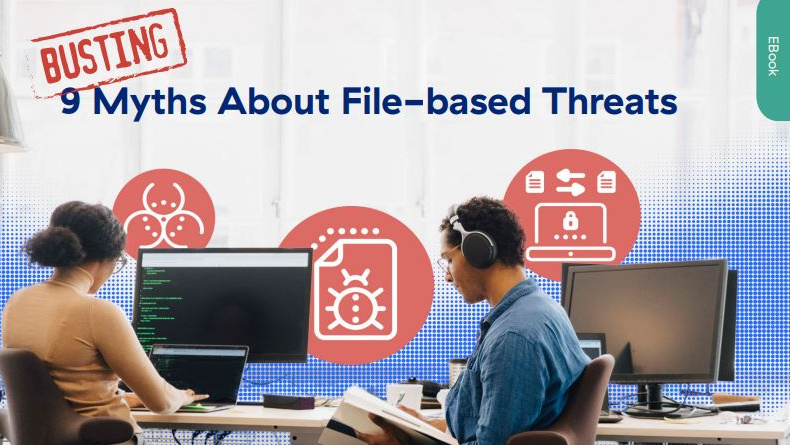Alarm raised over patched Phemedrone Stealer malware that's being used to target Windows PCs - here's what you need to know
Phemedrone Stealer is being used to exploit a vulnerability in Windows Defender SmartScreen despite the issue being patched in November 2023


Security experts have raised concerns about a new strain of malware, dubbed ‘Phemedrone Stealer’, that is being used to target Windows PCs through a vulnerability in Windows Defender SmartScreen.
Analysis from Trend Micro describes how a bypass vulnerability in the Windows Defender SmartScreen, tracked as CVE-2023-36025, is being exploited in a new malware campaign despite a patch having been issued late last year.
The bypass vulnerability allows threat actors to gain access to a user’s system and circumvent the SmartScreen feature’s checks and their associated prompts.
Phemedrone Stealer is then used to exfiltrate sensitive information from web browsers, cryptocurrency wallets, and messaging platforms such as Telegram or Discord.
The malware targets specific types of sensitive information depending on the source application, researchers said. For example, it harvests passwords, cookies and autofill information stored in password managers and authenticators of chromium-based browsers.
Once stolen, Phemedrone Stealer sends the data to the threat actors via a Telegram channel or the attacker’s command and control (C&C) server.
The report noted that despite the fact Microsoft patched the vulnerability on 14 November 2023, researchers have observed its use in the wild and that a large number of devices globally may still be vulnerable to this attack.
Sign up today and you will receive a free copy of our Future Focus 2025 report - the leading guidance on AI, cybersecurity and other IT challenges as per 700+ senior executives
Evidence of threat actors exploiting the vulnerability in the real world led the Cybersecurity and Infrastructure Agency (CISA) to add it to the Known Exploited Vulnerabilities (KEV) list.
Here’s how Phemedrone Stealer works
In their analysis, researchers at Micro Trend found the attackers gain initial access via cloud-hosted URLs using Discord or another cloud service such as FileTransfer.io.
The threat actors try to hide their malicious intent by disguising these URLs to look like reputable sites, the report said.
“The files are also often disguised using URL shorteners such as shorturl.at. An unsuspecting user might then be enticed to or tricked into opening a maliciously crafted .url file that exploits CVE-2023-36025.“
Once the malicious .url file is executed, the attackers employ a number of evasion techniques to avoid being detected on the system and complete the delivery of the payload.
RELATED RESOURCE

Distinguish the difference between fact and fiction when it comes to preventing file-based threats
Analysis of Phemedrone Stealer itself shows when executed on the victims PC, it decrypts certain items including a Telegram API token, chat ID, and Email_To mutex.
“This is done using a predefined salt and encryption key and the RijndaelManaged symmetric encryption algorithm. The process involves removing the "CRYPTED:" prefix from the strings, converting the remaining base64-encoded strings into byte arrays and decrypting these arrays to extract the original plain- text values.”
The malware compresses the stolen data into a ZIP file which it can then send to the attacker via Telegram, after validating the Telegram API token using the TokenIsValid method and making an API call to the app’s getMe endpoint.
The analysis concluded that malware strains such as Phemedrone Stealer emphasize the increasing sophistication of such attacks, where threat actors are able to quickly improve their infection chains using the latest critical vulnerabilities in popular software.

Solomon Klappholz is a former staff writer for ITPro and ChannelPro. He has experience writing about the technologies that facilitate industrial manufacturing, which led to him developing a particular interest in cybersecurity, IT regulation, industrial infrastructure applications, and machine learning.
-
 What businesses need to know about data sovereignty
What businesses need to know about data sovereigntyWithout a firm strategy for data sovereignty, businesses put their data and reputations at risk
-
 Anthropic says MCP will stay 'open, neutral, and community-driven' after donating project to Linux Foundation
Anthropic says MCP will stay 'open, neutral, and community-driven' after donating project to Linux FoundationNews The AAIF aims to standardize agentic AI development and create an open ecosystem for developers
-
 Exploitation of Docker remote API servers has reached a “critical level”
Exploitation of Docker remote API servers has reached a “critical level”News Hackers are targeting Docker’s remote access API as it allows them to pivot from a single container to the host and deploy malware with ease
-
 Cyber criminal underground “thriving” as weekly attacks surge by 75% in Q3 2024
Cyber criminal underground “thriving” as weekly attacks surge by 75% in Q3 2024Cyber attacks reached another all-time high this quarter as digital crime continues to be a highly profitable industry for threat actors
-
 SOC modernization and the role of XDR
SOC modernization and the role of XDRWhitepaper Automate security processes to deliver efficiencies across IT
-
 Uncovering the ransomware threat from global supply chains
Uncovering the ransomware threat from global supply chainsWhitepaper Effectively mitigate ransomware risk
-
 The near and far future of ransomware business models
The near and far future of ransomware business modelsWhitepaper Discover how criminals use ransomware as a cyberweapon
-
 Trend Micro security predictions for 2023
Trend Micro security predictions for 2023Whitepaper Prioritise cyber security strategies on capabilities rather than costs
-
 'Potentially unsecured' SMBs are propping up an IT supply chain riddled with ransomware
'Potentially unsecured' SMBs are propping up an IT supply chain riddled with ransomwareNews More than half of IT supply chains have been impacted by ransomware attacks in recent years and organisations are failing to implement the necessary steps to prevent future damage
-
 Trend Micro Worry-Free Business Security review: Great cloud-managed malware protection
Trend Micro Worry-Free Business Security review: Great cloud-managed malware protectionReviews A reassuringly simple endpoint-protection solution – although mobile support is basic
